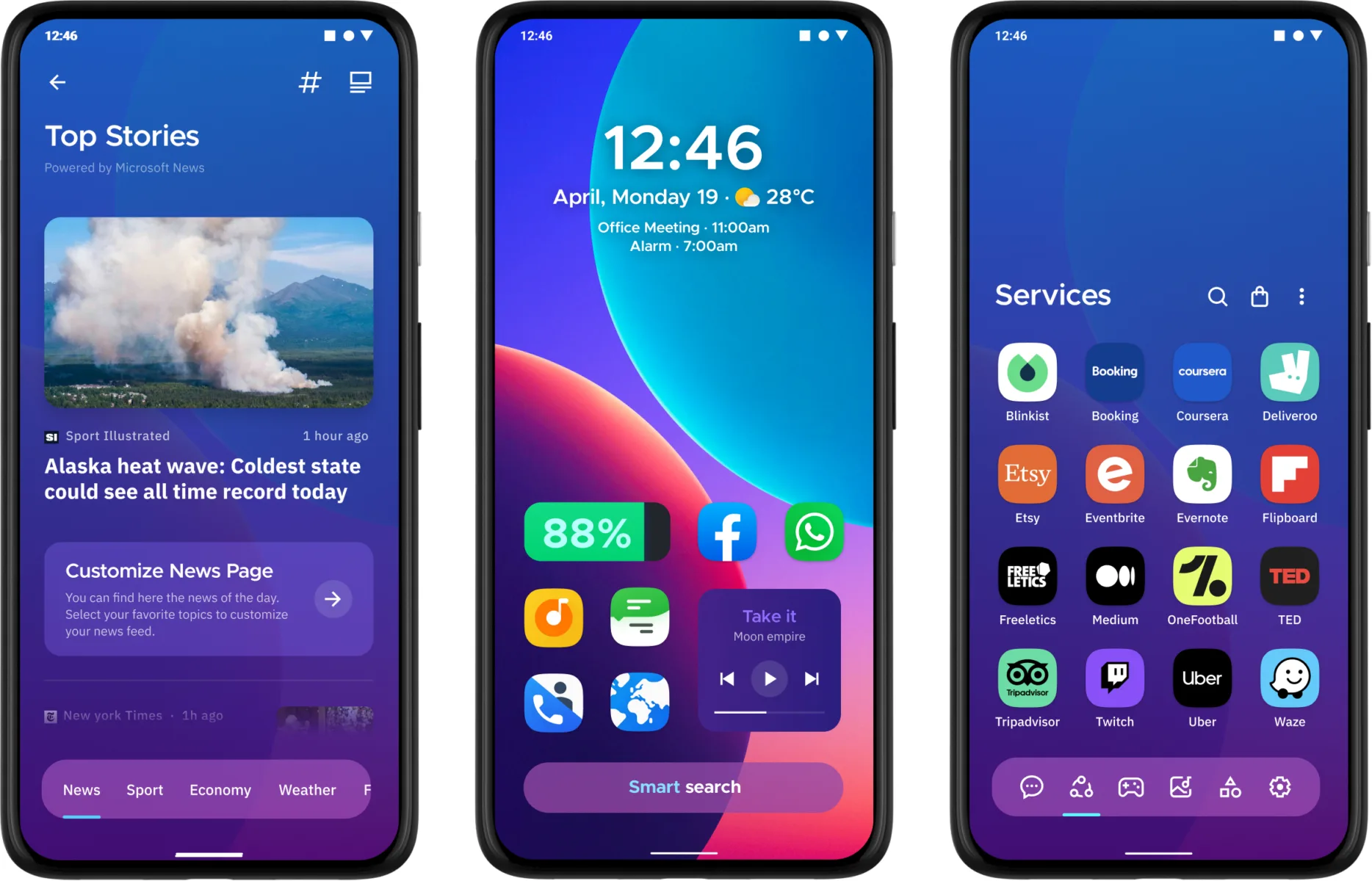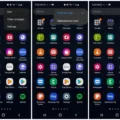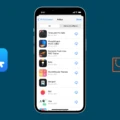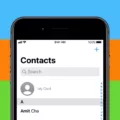Changing the launcher on your Android device can be a great way to personalize and enhance your user experience. A launcher is essentially the interface that allows you to interact with your device, including your home screen, app drawer, and widgets. By changing the launcher, you can customize the look and feel of your device, as well as add new features and functionality.
There are several popular Android launchers available that offer a wide range of customization options. One of the most popular choices is Nova Launcher, which allows you to customize your home screen, icon appearance, app drawer, and more. With Nova Launcher, you can choose from a variety of themes, icon packs, and gestures to make your device truly unique.
Another popular launcher is Niagara Launcher, which offers a minimalistic and intuitive interface. Niagara Launcher focuses on simplicity and ease of use, allowing you to access your apps and notifications quickly and efficiently. It also offers a unique app search feature, making it easy to find and launch your favorite apps.
If you’re looking for a launcher that offers advanced customization options, Smart Launcher 5 is worth considering. This launcher allows you to customize every aspect of your device, from the home screen layout to the app drawer design. It also offers a wide range of widgets and plugins, allowing you to add additional functionality to your device.
For those who prefer a more unique and unconventional launcher, AIO Launcher is a great choice. AIO Launcher provides a completely different interface, displaying all your important information, such as weather, calendar events, and system statistics, in a simple and organized manner. It also offers quick access to your most used apps and contacts, making it easy to navigate your device.
If you’re looking for a lightweight and fast launcher, Hyperion Launcher is worth considering. Hyperion Launcher offers a clean and smooth interface, with minimal resource usage. It also provides a variety of customization options, allowing you to personalize your device without sacrificing performance.
Action Launcher is another popular choice, offering a balance between customization and simplicity. It offers a unique feature called “Quicktheme,” which automatically applies a theme based on your wallpaper. Action Launcher also provides a variety of customization options for your home screen, app drawer, and icons.
For those who prefer a launcher that closely resembles the stock Android experience, Customized Pixel Launcher is a great option. This launcher offers a clean and minimalistic interface, similar to the launcher found on Google’s Pixel devices. It also provides a variety of customization options, allowing you to personalize your device to your liking.
Lastly, Apex Launcher is a popular choice for those who want a highly customizable launcher with a wide range of features. Apex Launcher allows you to customize your home screen, app drawer, and gestures, as well as add additional functionality through plugins. It also offers a variety of themes and icon packs to further personalize your device.
Changing the launcher on your Android device can greatly enhance your user experience. With the wide range of customization options available, you can personalize your device to your liking and make it truly unique. Whether you prefer a minimalistic interface or advanced customization options, there is a launcher out there that will suit your needs. So go ahead and explore the world of Android launchers to find the one that best fits your style and preferences.

How Do You Access Launcher Settings on Android?
To access launcher settings on an Android device, follow these steps:
1. Swipe up from the bottom of the screen to open the app drawer or home screen.
2. Look for the settings icon, which is typically represented by a gear-shaped icon.
3. Tap on the settings icon to open the settings menu.
4. In the settings menu, scroll down and find the “Apps & notifications” option.
5. Tap on “Apps & notifications” to open the app settings.
6. Look for the “Default apps” or “Home screen” option and tap on it.
7. In the default apps or home screen settings, you will find the option to access the launcher settings.
8. Tap on the launcher settings option to open the settings specific to your launcher.
Alternatively, if your device has a different method to access launcher settings, you can try the following steps:
1. Swipe down from the top of the screen to open the notification panel.
2. Tap on the settings icon in the top right corner of the screen.
3. In the settings menu, scroll down and find the “Apps & notifications” option.
4. Tap on “Apps & notifications” to open the app settings.
5. Look for the “Default apps” or “Home screen” option and tap on it.
6. In the default apps or home screen settings, you will find the option to access the launcher settings.
7. Tap on the launcher settings option to open the settings specific to your launcher.
Please note that the exact steps may vary slightly depending on the Android version and device manufacturer.
Which Launcher is Best for Android?
When it comes to Android launchers, there are several options available that offer unique features and customization options. Here are some of the best Android launchers:
1. Nova Launcher: Nova Launcher is highly regarded as one of the best Android launchers due to its extensive customization options. It allows users to personalize their home screen, app drawer, and gestures. With Nova Launcher, you can change icons, customize grid layouts, and even create backup and restore points for your layouts.
2. Niagara Launcher: Niagara Launcher is a minimalistic launcher that focuses on simplicity and efficiency. It provides a clean and organized home screen with a vertically-scrolling app list. Niagara Launcher also features a smart app search function and allows users to customize their favorite apps and contacts.
3. Smart Launcher 5: Smart Launcher 5 offers a unique categorization system that automatically organizes your apps into different categories, making it easier to find what you need. It also provides a range of stylish themes and customization options for a personalized experience.
4. AIO Launcher: AIO Launcher stands for “All in One” launcher, and it aims to provide all the necessary information and features on a single screen. It displays a wide range of widgets, including weather, calendar, system information, and more. AIO Launcher also supports icon packs and various customization options.
5. Hyperion Launcher: Hyperion Launcher is known for its smooth performance and fluid animations. It offers a wide range of customization options, including icon packs, adaptive icons, and various grid size options. Hyperion Launcher also provides gesture support and a built-in theme engine.
6. Action Launcher: Action Launcher focuses on providing a feature-rich experience while maintaining simplicity. It offers unique features like Quicktheme, which automatically applies a theme based on your wallpaper. Action Launcher also provides a customizable Quickbar and a wide range of customization options.
7. Customized Pixel Launcher: Customized Pixel Launcher is a modified version of the default Pixel Launcher found on Google Pixel devices. It offers an experience similar to stock Android but with additional customization options. Customized Pixel Launcher allows users to change icons, customize the dock, and add features like Google Feed integration.
8. Apex Launcher: Apex Launcher is a highly customizable launcher that offers a wide range of options for personalization. It provides features like gesture controls, customizable grid sizes, and scrollable docks. Apex Launcher also supports icon packs and various transition effects.
These are some of the best Android launchers available, each offering unique features and customization options to enhance your Android experience. Ultimately, the best launcher for you will depend on your personal preferences and the specific features you are looking for.
How Do You Remove the Default Launcher From Your Android?
To remove the default launcher from your Android device, you can follow these steps:
1. Go to the Settings app on your Android device. You can usually find it in your app drawer or by swiping down from the top of the screen and tapping the gear icon.
2. In the Settings menu, scroll down and look for the “Apps” or “Applications” option. It might be located under a “Device” or “Device Management” section, depending on your Android version and device.
3. Once you find the Apps or Applications option, tap on it to open the list of installed apps on your device.
4. In the list of apps, look for the default launcher app that you want to remove. The default launcher might be named “Launcher” or have a name related to your device’s manufacturer (e.g., “Samsung Experience Home” for Samsung devices).
5. Tap on the default launcher app to open its App Info page.
6. On the App Info page, you should see various options and details about the app. Look for the “Open by Default” or “Set as Default” option and tap on it.
7. In the Open by Default or Set as Default menu, you will find an option called “Clear Defaults.” Tap on it to remove the default status of the launcher app.
8. After clearing the defaults, go back to the list of installed apps and find the default launcher app again.
9. Tap on the default launcher app, and you should now see an option to uninstall or disable the app. If the option to uninstall is available, tap on it to remove the default launcher from your Android device.
If you encounter any issues while following these steps, such as not being able to find the default launcher app or not having the option to uninstall it, you can try booting your device into Safe Mode. Here’s how to do it:
1. Press and hold the power button on your Android device until the power menu appears.
2. In the power menu, tap and hold the “Power off” or “Restart” option until you see a pop-up asking if you want to reboot your device into Safe Mode.
3. Tap on the “OK” or “Restart in Safe Mode” option to proceed.
4. Once your device boots up in Safe Mode, repeat the steps mentioned earlier to find and uninstall the default launcher app.
Using Safe Mode can help in cases where the default launcher app is being stubborn or causing issues, as it disables third-party apps and only allows system apps to run. This can make it easier to uninstall problematic apps.
By following these steps, you should be able to remove the default launcher from your Android device and choose a different launcher if desired.
Can You Have More Than One Launcher on Android?
It is possible to have more than one launcher on an Android device. Launchers are essentially the user interface that allows you to interact with your device and customize its appearance and behavior. They provide a way to personalize your home screen, icons, app drawer, folders, and other elements of your device’s interface.
Having multiple launchers installed on your Android device allows you to switch between them and choose the one that suits your preferences at any given time. This can be particularly useful if you enjoy experimenting with different layouts, themes, and features offered by various launchers.
Here are a few key points to consider regarding having multiple launchers on Android:
1. Customization Options: Different launchers offer various customization options, such as different layouts, icon packs, transition effects, and gestures. By having multiple launchers, you can explore and switch between these options to find the one that best matches your style and preferences.
2. Home Screen Setup: Launchers provide the ability to customize your home screen layout, including the number of home screens, widgets, and shortcuts. Having multiple launchers allows you to set up different home screen configurations for different purposes, such as work, personal use, or specific projects.
3. App Drawer Organization: Launchers also offer different ways to organize and access your apps. Some launchers provide categorized app drawers, while others allow you to create custom folders and sort apps manually. By having multiple launchers, you can experiment with different app organization methods and choose the one that enhances your productivity and ease of use.
4. Themes and Visual Styles: Launchers often come with pre-designed themes or allow you to download and apply new ones. By having multiple launchers, you can switch between different themes and visual styles to give your device a fresh look whenever you desire.
5. Performance Considerations: It’s important to note that having multiple launchers installed on your device can potentially impact its performance and memory usage. Each launcher consumes system resources, so it’s recommended to keep only the essential launchers that you regularly use and uninstall any unnecessary ones.
Having more than one launcher on an Android device allows you to customize and personalize your device’s interface according to your preferences. It offers the flexibility to switch between different layouts, themes, and features, enhancing your overall user experience.
Conclusion
Changing the Android launcher can greatly enhance the overall user experience on your device. By installing a different launcher, you can customize your home screen, icons, app drawer, and more. This allows you to personalize your device to suit your preferences and style.
There are numerous Android launchers available, each offering unique features and customization options. Some popular options include Nova Launcher, Niagara Launcher, Smart Launcher 5, AIO Launcher, and Hyperion Launcher, among others. These launchers provide a wide range of customization options and settings to make your device truly your own.
When it comes to changing your launcher, it’s important to note that you can have multiple launchers installed on your device at the same time. This means that you can easily switch between different launchers and try out different setups to find the one that suits you best.
If you encounter any issues with a particular launcher, such as it not responding or causing problems on your device, you can uninstall it by going to the Settings > Apps > All Apps (or Installed Apps) > Launcher > Open by Default > Clear Defaults. Alternatively, you can also try booting your device into Safe Mode to uninstall problematic apps.
Changing the Android launcher allows you to take control of your device’s appearance and functionality. It gives you the freedom to customize and personalize your device to reflect your unique style and preferences. So go ahead and explore the various Android launchers available to find the one that suits you best and transform your device into something truly unique.













